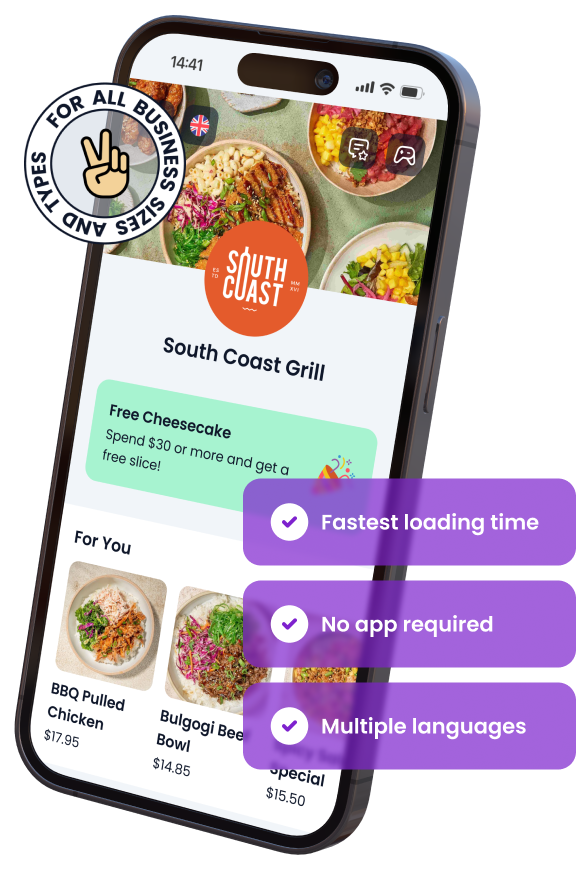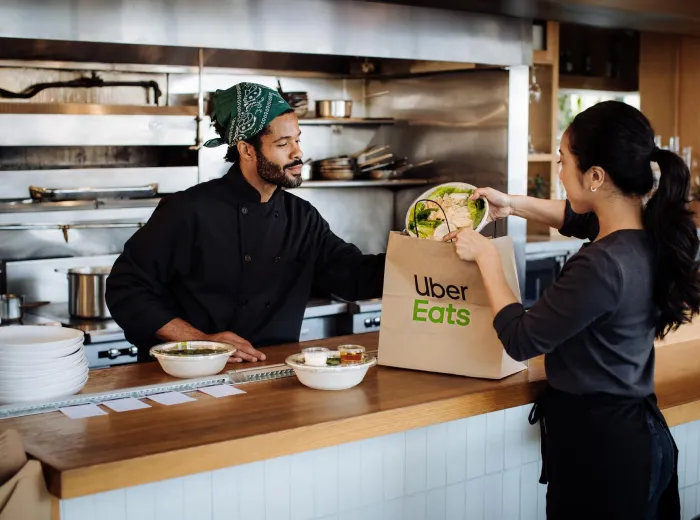

Opening a Restaurant in Missouri: 10 Mistakes Not to Make
Opening a restaurant anywhere is a big undertaking—but in Missouri, there are some unique hurdles and opportunities that many new owners don’t see coming. From licensing quirks to hidden operational costs, the Show-Me State has its own way of doing business. And if you’re not fully prepared, small missteps can turn into expensive mistakes.
Having advised dozens of restaurant owners across Missouri—ranging from BBQ joints in Kansas City to bistros in St. Louis and cozy diners in smaller towns—I’ve seen the same issues pop up time and again. Often, it’s not the big, obvious problems that cause trouble. It’s the overlooked details—like underestimating utility costs, skipping essential permits, or choosing the wrong location for your concept—that quietly drain your time, money, and energy.
This article isn’t just about what to do—it’s about what not to do. My goal here is simple:
To help you spot the most common (and costly) mistakes before you make them.
Whether you’re a first-time owner or a seasoned operator expanding into Missouri, this guide will walk you through the 10 mistakes that could derail your restaurant—and how to avoid them with confidence.
Overlooking Missouri’s Unique Licensing Rules
Missouri may seem business-friendly—and in many ways, it is—but its licensing system can surprise newcomers. Many restaurant owners rush through this part, only to face delays, fines, or even shutdowns later. Licensing here isn’t just about filing paperwork; it’s about knowing exactly which permits and approvals your specific concept requires at the state, county, and city levels.
Let’s break down the key areas where first-time Missouri restaurant owners often slip up.
Missing the Right Business Structure
Choosing your business structure isn’t just about paperwork—it affects your taxes, personal liability, and even how you can raise money down the line.
Common options for Missouri restaurants:
- Sole Proprietorship: Simple to set up, but offers no personal liability protection.
- LLC (Limited Liability Company): Very popular for restaurants; protects personal assets and offers flexible taxation.
- Corporation (C-Corp or S-Corp): Better for larger ventures or those seeking outside investors, but more complex to manage.
Many Missouri restaurant owners lean toward LLCs due to their simplicity and protection. However, it’s worth discussing your long-term goals with an accountant or attorney before filing.
Failing to pick the right structure upfront can lead to tax surprises and legal headaches later—especially if you plan to grow.
Liquor License Surprises in Missouri
Selling alcohol in Missouri is heavily regulated, and liquor licenses aren’t one-size-fits-all. The process can take months, and there’s no shortcut around it.
Types of common Missouri liquor licenses:
- By the Drink (Resort, Restaurant, Tavern, etc.): Varies by your food-to-drink sales ratio and seating capacity.
- Sunday Sales Permit: Required for alcohol sales on Sundays.
- Tasting and Catering Permits: Often needed for special events or pop-ups.
Important resource:
Missouri Division of Alcohol and Tobacco Control
Don’t assume you can open as “beer and wine only” without a license, or that BYOB is allowed without restrictions—Missouri law doesn’t automatically permit that. Always apply early, as delays are common.
Forgetting Local Permits and Inspections
Many restaurant owners focus only on state licenses, overlooking city and county-specific rules—which can shut you down faster than anything else.
Typical required permits at the local level:
- Business License (also called an Occupancy License): Grants legal right to operate in a specific city or county.
- Health Department Permit: Mandatory for all food service establishments.
- Fire Safety Inspection: Often required before opening and during annual renewals.
- Signage Permits: Required for outdoor or window signage in most Missouri cities.
Some cities, like St. Louis or Kansas City, have additional zoning or building inspections. Always check with your local city hall or county office before signing a lease or starting renovations.
Skipping this step is a fast track to costly delays, forced closures, or fines—often right when you can least afford them.
Underestimating Startup Costs — Especially Hidden Ones
One of the biggest traps new restaurant owners fall into—especially in Missouri—is believing that a “low cost of living” automatically means a low cost of opening a business. While it’s true that Missouri rents and wages are often cheaper than in other states, many hidden startup expenses can catch you off guard fast.
If you don’t budget correctly from the start, you could find yourself running out of cash before you even serve your first meal. Let’s walk through the often-overlooked costs that regularly surprise Missouri restaurant owners.
Lease-Related Costs Beyond Rent
When you’re calculating your monthly lease, don’t stop at just the base rent. Many commercial leases in Missouri include additional expenses that are not always obvious upfront.
Watch out for:
- Common Area Maintenance (CAM) Fees: Charges for shared spaces, landscaping, parking lot upkeep, etc.
- Property Taxes: These can be passed on to tenants through some leases—always ask.
- Insurance Requirements: Many landlords require specific coverage limits, which can push up your premiums.
- Repair & Maintenance Clauses: Some leases make you responsible for costly repairs like HVAC systems or plumbing.
Always ask for a full breakdown of your lease terms before signing anything—and ideally, have a real estate attorney review it. Many owners find their “affordable” rent balloons once all extras are factored in.
Utilities and Renovations in Older Buildings
Missouri is known for charming historic buildings, but these spaces often come with hidden renovation costs.
Common surprises include:
- Outdated HVAC Systems: Replacement or repairs can run $10,000 or more.
- Plumbing & Electrical Updates: Older buildings frequently need full rewiring or plumbing upgrades to meet modern restaurant codes.
- Grease Traps and Ventilation: Installing or upgrading kitchen exhaust systems and grease traps is expensive—but mandatory.
- ADA Compliance: Many spaces require accessibility modifications, including bathrooms and entrances.
Even minor updates can snowball quickly. Always get detailed contractor bids before signing a lease, and ask your health department about compliance issues early on.
Initial Inventory and Pre-Opening Payroll
Many first-time owners underestimate just how much cash is needed before they even open their doors.
Here’s where many budgets fall short:
- Initial Food & Beverage Inventory: You’ll need enough for soft openings and initial weeks of service.
- Smallwares and Kitchen Tools: Think plates, glassware, utensils, kitchen gadgets, and bar tools—it adds up fast.
- Pre-Opening Staff Training: You’ll need to pay your staff for training shifts before you officially open. This can be several weeks of payroll with no revenue yet.
- Marketing Launch Costs: Branding, website setup, social media ads, and signage should be factored in upfront.
Many restaurant owners make the mistake of planning only for buildout costs, forgetting these pre-opening essentials. Without a cushion for these expenses, you’ll start behind the eight ball from day one.
Pro Tip:
Always budget at least 20-30% more than your initial cost estimates—because unexpected expenses will come up. A realistic, well-researched budget isn’t just smart—it’s your best protection against early failure.
Choosing a Bad Location for Your Concept
You’ve heard it before—location, location, location—but many restaurant owners still get this wrong, especially in Missouri. It’s not just about finding a busy corner or a cheap lease. Your location must align with your concept, your target customers, and even your pricing.
Missouri has diverse markets—from bustling urban centers like St. Louis and Kansas City to small towns and tourist spots like Branson or Lake of the Ozarks. What works in one area can fall flat in another. Let’s dive into the key mistakes to avoid when scouting locations.
Misreading Traffic Patterns and Parking
Many owners make the mistake of falling in love with a “cute” spot—without understanding how traffic actually flows around it.
Key things to check:
- Foot Traffic: Visit at different times of day—lunch, dinner, weekends. Does your target crowd walk by?
- Vehicle Traffic: Missouri is a driving-heavy state, especially outside of downtown cores. Is your spot easy to access by car?
- Parking Availability: Many diners simply won’t visit if parking is inconvenient or limited. Street parking alone may not be enough.
Also, remember to check traffic seasonality. Some areas may be busy during summer or festivals but quiet the rest of the year.
Bottom line: Don’t assume traffic based on looks—spend time physically observing the area.
Ignoring Neighborhood Demographics
It’s easy to focus on a trendy building or cheap rent—but you must align your concept with local demographics.
Here’s what to analyze:
- Average Household Income: Will locals afford your menu prices regularly?
- Lifestyle Preferences: Does your menu appeal to families, young professionals, tourists, or retirees?
- Competition Mix: Are there similar restaurants nearby—and is that good or bad for you?
Tools like the U.S. Census Bureau or simply talking with nearby businesses can reveal whether your concept will resonate.
Remember: A high-end wine bar might thrive downtown, but it’ll struggle near a college campus known for $2 beer nights.
Skipping Lease Flexibility Clauses
Many owners get locked into leases that leave no room to grow—or escape.
Key clauses to negotiate:
- Early Termination Options: In case the business underperforms.
- Expansion Clauses: Right of first refusal if neighboring space becomes available.
- Assignment/Subletting Flexibility: This makes it easier to sell your business later if needed.
- Rent Escalation Caps: Prevents sudden spikes in rent.
Missouri landlords can be surprisingly open to negotiation, especially in underutilized spaces—if you ask.
Signing a rigid lease in a bad-fit location could trap you for years, draining your finances and limiting your ability to adapt.
Pro Tip:
Take your time when selecting a location. It’s better to wait 3–6 extra months for the right spot than to rush into the wrong one just to meet an arbitrary deadline.
Hiring Without a Solid Staffing Plan
Hiring in Missouri might seem easier than in high-cost states—but it still requires serious planning. Many restaurant owners dive in without a clear strategy, only to face high turnover, poor service, or compliance issues later.
Missouri’s labor market has its own dynamics, especially with its mix of large cities, small towns, and college communities. To succeed, you need more than just “help wanted” signs—you need a structured staffing plan that addresses recruitment, training, compliance, and long-term retention.
Overlooking Training and Retention
One of the fastest ways to lose customers—and staff—is failing to train your team properly from day one.
Here’s where many owners go wrong:
- Skipping Orientation: Staff need a clear understanding of your vision, policies, and expectations.
- No Standardized Training Materials: Inconsistent training creates inconsistent service.
- Ignoring Retention Strategies: Offering incentives, flexible scheduling, or small perks can make a big difference in keeping good employees.
In smaller Missouri towns, word travels fast. A restaurant known for poor treatment of staff or chaotic operations can quickly damage its reputation—not just with customers but within the hiring pool, too.
Investing in training and retention doesn’t just improve operations—it reduces costly turnover and protects your brand.
Misclassifying Workers
Worker misclassification is one of the most common compliance mistakes in Missouri restaurants—and it can trigger severe penalties.
Key things to watch:
- Employees vs. Independent Contractors: Most restaurant workers must be classified as employees, not contractors.
- Tip Credits: Missouri allows tip credits under minimum wage law, but you must follow specific rules—and they change periodically.
- Overtime Pay: Non-exempt employees must receive overtime for hours worked beyond 40 per week.
Missteps here can lead to audits from the Missouri Department of Labor or the IRS.
Tip: Keep meticulous records of hours, tips, and wages, and use payroll software designed for restaurants to minimize risk.
Forgetting to Budget for Workers’ Comp
Missouri law requires nearly all businesses with employees to carry workers’ compensation insurance—and restaurant owners sometimes overlook this mandatory cost.
What to know:
- Premiums Are Based on Payroll: The more staff you have—and the more physically demanding the jobs—the higher your premiums.
- Rates Vary by Risk Level: Kitchen staff and delivery drivers tend to have higher premiums due to injury risks.
- Penalties for Noncompliance: Operating without workers’ comp can lead to fines, business closure orders, or even lawsuits.
Before hiring anyone, get quotes from several insurance providers and factor this into your startup budget.
Pro Tip:
Plan your staffing budget with more than just wages in mind. Factor in payroll taxes, workers’ comp, training time, and benefits—even modest ones like staff meals or shift discounts. A realistic staffing plan can make or break your restaurant’s ability to thrive in Missouri’s competitive market.
Skipping the Missouri Sales Tax Setup
Sales tax might not be the most exciting part of opening your restaurant—but in Missouri, skipping or mishandling this step can lead to serious trouble. Unlike some states where sales tax registration is automatic during business setup, Missouri requires restaurant owners to take a few specific extra steps to get compliant.
If you don’t collect and remit the right taxes—or if you start operating without registering—penalties can be swift and expensive. Here’s what you need to know to stay on the right side of the law from day one.
How to Register for Sales Tax
Every restaurant that sells food and beverages in Missouri must collect and remit sales tax. Before you open your doors, you’ll need a Missouri Sales Tax License, which you can’t legally operate without.
Here’s how to register:
- Apply Online through the Missouri Department of Revenue’s MyTax Portal.
- Fill out Form 2643 (Business Tax Application) if applying by mail.
- Provide details including your business entity type, NAICS code (for restaurants, typically 722511), and estimated monthly sales.
- Pay a bond or deposit if requested (based on your estimated monthly tax liability).
- Display your sales tax license prominently in your restaurant.
Registration is free, but missing this step can lead to shutdown orders, back taxes, and hefty fines.
Restaurant-Specific Tax Considerations
Restaurants in Missouri deal with several tax nuances that aren’t always obvious upfront.
Key points to understand:
- Prepared Food Is Taxable: Unlike grocery items, prepared meals served at your restaurant are always subject to sales tax.
- Dine-In vs. Takeout: Both are taxable in Missouri, unlike some states that exempt certain takeout sales.
- Alcohol Sales: These are taxed at the same general rate but must be tracked separately for reporting.
- Local Sales Tax Rates: In addition to the 4.225% state rate, many cities and counties (like St. Louis, Springfield, or Columbia) add local rates, sometimes bringing the total to 8–11%.
To find your exact rate, use the Missouri Sales Tax Rate Lookup Tool.
Also, if you’re running a catering arm, food truck, or special event booth, you may need to collect tax under a different permit or rate—so double-check with the Department of Revenue.
Filing and Remitting Sales Tax Properly
Registering is just the beginning—you’ll also need to file and pay your taxes on time. The Missouri DOR will assign you a filing frequency based on your projected sales volume (monthly, quarterly, or annually).
Common filing tips:
- File online through MyTax Missouri.
- Track all taxable and non-taxable sales separately—your POS system should help.
- Don’t mix collected sales tax with operating funds—set it aside to avoid surprise shortages.
- Missed a deadline? Interest and penalties accrue quickly. Always file even if you didn’t collect any tax that period.
Setting up sales tax correctly is a one-time effort that can save you endless stress down the road. Missouri’s Department of Revenue is helpful—but they won’t waive penalties just because you didn’t know better.
Pro Tip:
Choose a restaurant-specific POS system that automates tax tracking for both food and alcohol sales across different service types. It’ll help you stay accurate—and make tax season far less painful.
Overspending on Equipment Too Early
One of the most common mistakes I’ve seen among new restaurant owners in Missouri is overspending on equipment before their restaurant even opens. It’s easy to get caught up in the excitement of buying shiny new kitchen tools, furniture, or gadgets—but this can drain your startup capital fast, leaving you short on cash for more critical expenses like staffing, marketing, and daily operations.
Missouri’s restaurant scene includes everything from sleek urban eateries to rustic diners, and not every concept needs top-of-the-line gear from the start. Here’s how to avoid costly equipment mistakes that could hold your business back before it even begins.
Which Equipment Should You Buy Used?
Not everything in your kitchen needs to be brand new. In fact, buying gently used equipment can save you thousands of dollars—and many pieces function just as well as new ones.
Smart buys for used equipment:
- Commercial Ranges and Ovens: These are built to last and easy to refurbish.
- Refrigerators and Freezers: Just be sure to check for compressor issues and proper seals.
- Dishwashers: Many reputable suppliers refurbish these to near-new condition.
- Shelving Units and Stainless Steel Tables: These rarely wear out and can be easily cleaned.
- Dining Furniture: Tables and chairs can often be refinished or reupholstered.
Places to look:
- Local restaurant auctions or liquidation sales
- Restaurant supply stores that offer certified used items
- Online marketplaces focused on commercial kitchen gear
Always inspect equipment in person when possible—and request a test run on major appliances.
Leasing vs. Buying Kitchen Equipment
In some cases, leasing equipment makes far more sense than buying it outright—especially for expensive items with shorter lifespans or high repair risks.
When leasing can be a smart move:
- Ice Machines: These break often and are expensive to fix—many owners prefer to lease.
- Point-of-Sale (POS) Systems: Leasing can help you get advanced systems with lower upfront costs.
- Large Cooking Equipment: If you’re uncertain about your long-term needs, leasing gives flexibility.
Pros of leasing:
- Lower upfront costs
- Easier equipment upgrades
- Service and maintenance often included
Cons of leasing:
- Higher long-term cost
- Locked into contracts
Make sure to compare leasing vs. buying based on your cash flow, credit, and long-term plans before committing.
Avoiding “Shiny Object Syndrome”
It’s tempting to stock your kitchen with every gadget and tool imaginable—but most restaurants don’t need half the equipment they think they do at launch.
Common unnecessary splurges:
- Specialty appliances you’ll rarely use (e.g., sous-vide machines, high-end juicers)
- Excessive décor and designer furniture that doesn’t add to customer experience
- Extra-large equipment you think you’ll grow into (but may never use fully)
Focus first on:
- Core cooking equipment for your main menu items
- Efficient refrigeration and food storage
- A functional, durable POS system
Ask yourself: Does this piece of equipment help me serve my target menu profitably from day one?
If not, skip it for now—you can always upgrade later once your restaurant proves itself.
Pro Tip:
Start with a minimum viable kitchen—the essential equipment needed to execute your concept well. Once you’re profitable and know what sells best, you can reinvest in additional equipment strategically, not impulsively.
Not Testing Your Menu Before Launch
It’s natural to be excited about your menu—after all, it’s the heart of your restaurant. But one of the biggest mistakes I see Missouri restaurant owners make is assuming their menu will automatically resonate with diners without testing it first. This is a risky gamble that often leads to low sales, wasted ingredients, and even bad reviews right out of the gate.
Testing your menu before your grand opening isn’t just smart—it’s essential. It allows you to refine dishes, set the right price points, and identify which items will become your crowd favorites.
Here’s how to do it the right way.
Easy Ways to Pre-Test Dishes Locally
You don’t need to run a full-scale restaurant to test your menu—you can do it in lower-risk, lower-cost ways before committing fully.
Practical ways to test your food:
- Pop-Up Events: Partner with local breweries, coffee shops, or event spaces for short-term pop-ups.
- Farmers’ Markets and Food Fairs: These are popular in many Missouri towns and give you immediate feedback from real customers.
- Catering Private Events: Offer catering services for small gatherings or corporate lunches to gauge response.
- Soft Opening Dinners: Invite friends, family, and local influencers for trial runs before officially opening.
- Local Food Trucks: Renting or borrowing a food truck for a weekend can let you test specific dishes with minimal setup.
Benefits of menu testing:
- Get honest feedback on taste, presentation, and pricing.
- Identify which dishes are labor-intensive or hard to execute consistently.
- Fine-tune your menu based on what sells—not just what you like.
Remember, Missouri diners’ tastes vary widely by region. What works in Kansas City’s barbecue-loving crowd may not fly in a college town or lakeside tourist area.
Pricing Mistakes That Kill Margins
Even if your food gets rave reviews, your menu won’t succeed if your prices aren’t sustainable. Underpricing is one of the most common mistakes new restaurant owners make—especially those eager to compete.
Key pricing pitfalls to avoid:
- Basing Prices on Competitors Alone: Your costs may not match theirs—focus on your own margins first.
- Forgetting Ingredient Fluctuations: Missouri’s seasonal ingredient swings can drastically change food costs.
- Ignoring Labor in Pricing: If a dish takes too long to prep, it may not be profitable—even if ingredients are cheap.
- Offering Oversized Portions: Missouri diners appreciate value, but huge portions can quietly erode your profits.
Simple formula for starting menu pricing:
- Calculate the total ingredient cost per dish.
- Multiply by 3 to 4 for a general target price range (adjust based on labor intensity and local market).
- Track portion sizes closely to avoid over-serving.
Bonus tip: Always test your pricing at soft openings or pop-ups. Watch not just what people order—but whether they reorder or mention value in feedback.
Pro Tip:
A menu that’s profitable, executable, and appealing doesn’t happen by accident—it’s tested and refined. Spend time upfront dialing it in, and you’ll save yourself from costly revisions later, when changing customer expectations becomes much harder.
Poorly Planned Marketing (Or No Marketing at All)
Many Missouri restaurant owners assume that “if the food is good, customers will come.” Unfortunately, it’s rarely that simple. Even in tight-knit communities, you can’t rely on word of mouth alone—especially during your opening months.
A common mistake among new restaurant owners is either skipping marketing entirely or putting together a scattered, last-minute plan. Without consistent, targeted promotion, your restaurant will struggle to gain traction, no matter how great your food or service is.
Here’s how to avoid this costly pitfall and set your restaurant up for long-term success.
Local Partnerships That Work
One of the most effective—and underused—marketing tools in Missouri is local partnerships. Done right, these connections can quickly get your name out in the community.
Ideas for collaboration:
- Local Breweries and Wineries: Missouri’s craft beverage scene is strong, and partnering for events or pairings draws both audiences.
- Community Events and Festivals: Whether it’s a chili cook-off, farmers’ market, or town fair, these events attract locals looking for new dining options.
- Schools and Churches: Sponsoring school events or hosting fundraisers can bring families in the door.
- Nearby Businesses: Offer cross-promotions with nearby gyms, salons, or boutiques to boost midweek traffic.
The key? Make it mutually beneficial—offer discounts, co-branded giveaways, or joint promotions that benefit both sides.
Digital Marketing Basics You Can’t Skip
Your online presence isn’t optional—it’s the first impression most people will have of your restaurant. Skipping this step can leave your business invisible to potential diners.
Here’s where every Missouri restaurant needs to focus:
- Claim Your Google Business Profile: This is non-negotiable. It affects your visibility on Google Maps and search results.
- Create a Simple, Mobile-Friendly Website: At minimum, list your hours, location, menu, and contact info.
- Social Media Presence: Focus on the platforms your audience uses:
- Facebook: Works well for family-friendly and community-focused restaurants, especially in smaller towns.
- Instagram: Ideal for visual concepts like bakeries, cafes, and high-end restaurants.
- TikTok: Emerging platform for playful, behind-the-scenes content—great for college towns or younger demographics.
- Facebook: Works well for family-friendly and community-focused restaurants, especially in smaller towns.
Consistent posting (2-3 times per week) and authentic content perform far better than sporadic, heavily promotional posts.
Loyalty Programs Done Right from Day One
Many owners wait too long to implement loyalty programs—but starting early can create long-term repeat customers.
Simple options to start with:
- Punch Cards: Great for coffee shops or quick-service spots.
- Digital Loyalty Apps: Platforms like Toast or Square offer built-in loyalty systems linked to POS.
- Email Marketing Lists: Collect emails from day one—offer discounts for first-time sign-ups and send regular updates.
Key rules for effective loyalty:
- Make rewards achievable (don’t require 20+ visits for a freebie).
- Promote your program clearly—on menus, receipts, and social media.
- Use it to encourage specific goals, like slow days or higher-margin items.
Starting your loyalty program from day one turns occasional diners into repeat regulars—which is exactly what most Missouri restaurants need to thrive.
Pro Tip:
Don’t wait until your doors open to start marketing. Build buzz during your buildout and soft opening phase with behind-the-scenes photos, progress updates, and sneak peeks. This creates anticipation—and a ready crowd for your grand opening.
Ignoring Seasonality and Weather Impacts
Missouri’s weather isn’t just unpredictable—it can make or break your restaurant’s cash flow if you’re not prepared. Many new restaurant owners overlook just how much the seasons affect foot traffic, ingredient costs, and even staffing needs.
Between humid, hot summers and icy, snowy winters, Missouri experiences wide temperature swings that directly impact diner habits. Failing to plan for these shifts is a costly mistake that can leave you scrambling during slower months or missing opportunities during busy ones.
Here’s how to stay ahead of the curve and keep your revenue stable year-round.
Planning for Harsh Winters and Hot Summers
Missouri winters can be brutal, with snowstorms, freezing temperatures, and icy roads reducing restaurant visits—especially for dine-in-heavy businesses. On the flip side, summers bring extreme heat and humidity, pushing diners toward takeout, delivery, or outdoor patios.
Tips to weather the extremes:
- Winter Prep:
- Offer delivery or curbside pickup options.
- Run winter comfort food specials that appeal during cold months.
- Adjust staffing to match slower foot traffic days.
- Keep sidewalks and parking lots clear for safety and accessibility.
- Offer delivery or curbside pickup options.
- Summer Prep:
- Feature refreshing, lighter menu items that suit hot weather.
- Promote cold beverages and frozen treats.
- Extend delivery zones during heatwaves when people avoid going out.
- Feature refreshing, lighter menu items that suit hot weather.
Many Missouri restaurants thrive by adapting their hours and menu seasonally—those who don’t often face cash flow issues during extreme weather stretches.
Patio Dining and Outdoor Space Regulations
Outdoor dining is a goldmine during Missouri’s spring and fall seasons—but it’s not as simple as throwing a few tables outside.
What to consider:
- Local Permits: Many cities (especially St. Louis, Kansas City, and tourist towns) require permits for sidewalk or patio seating.
- Furniture & Shade: Invest in durable, weather-resistant furniture and shaded areas like umbrellas or awnings.
- Heaters & Fans: Extend your patio season with propane heaters for chilly nights and fans for summer afternoons.
- Noise and Hours Restrictions: Be mindful of neighborhood rules about noise and outdoor service cut-off times.
If your restaurant has outdoor space potential, maximizing it could dramatically boost your seasonal profits—but you’ll need to plan ahead and get approvals.
Adapting Your Menu Seasonally
Seasonal menus aren’t just trendy—they’re often necessary in Missouri, where ingredient availability and customer preferences shift throughout the year.
Ideas for effective seasonal adjustments:
- Feature Local Ingredients: Partner with nearby farms or markets to highlight what’s fresh and in season—customers appreciate local sourcing in Missouri.
- Offer Comfort Foods in Winter: Hearty dishes like stews, casseroles, and rich desserts tend to perform better during colder months.
- Focus on Lighter Fare in Summer: Salads, grilled items, and cold dishes become popular when temperatures rise.
- Seasonal Beverages: Rotate cocktail menus, coffees, and non-alcoholic drinks to reflect the weather—think warm spiced cider in fall or iced lemonades in summer.
Seasonal updates keep your menu exciting and show customers that your restaurant stays in tune with local tastes and the time of year.
Pro Tip:
Build a “seasonality map” for your restaurant—tracking foot traffic, top-selling items, and marketing campaigns by season. Over time, you’ll spot clear trends that let you proactively plan promotions, staffing, and inventory with confidence.
Failing to Plan for Long-Term Profitability
Many restaurant owners in Missouri get caught up in the rush of opening day, focusing solely on immediate survival. But here’s the reality—getting open is just the beginning. If you’re not planning for long-term profitability from day one, you could end up working harder every year just to stay afloat, without ever seeing real financial rewards.
It’s not enough to simply cover costs or break even. Your restaurant needs to consistently generate healthy profits to reinvest in equipment, staff, and growth—or to give yourself breathing room as an owner. Let’s explore the key steps every Missouri restaurant owner should take to ensure long-term success.
Tracking Key Numbers From Day One
One of the biggest mistakes new restaurant owners make is waiting too long to track their financial performance. You can’t manage what you don’t measure.
Numbers you must track from the start:
- Prime Cost (Food + Labor): Ideally, this should stay below 60-65% of your total sales.
- Cost of Goods Sold (COGS): Keep food and beverage costs under control—usually 28-35% for food, 18-25% for alcohol.
- Labor Cost Percentage: Factor in not just wages, but taxes, benefits, and insurance; aim for 25-30% of sales, though this varies by concept.
- Operating Expenses: Track rent, utilities, marketing, insurance, and maintenance closely.
- Net Profit Margin: Your ultimate goal—successful independent restaurants often target a 10-15% net profit margin, though this may take time to achieve.
Set up weekly or biweekly reviews of these metrics with your manager or accountant—not just quarterly or annually.
Growth Plans That Fit Missouri’s Market
Once your restaurant stabilizes, it’s tempting to think about expansion—but growing too soon or in the wrong way can sink your business.
Here’s how to approach growth strategically:
- Catering Services: Many Missouri restaurants find catering profitable for events, offices, or weddings—especially in smaller towns with fewer options.
- Takeout & Delivery: Consumer demand for takeout remains high. Platforms like DoorDash and Uber Eats are common, but also consider direct online ordering to avoid fees.
- Event Hosting: Offering private dining, meeting spaces, or ticketed dinners can bring in extra income.
- Second Locations: Only consider this after your first location shows consistent, strong profits for at least 12-18 months.
Each market in Missouri has its own quirks—what works in Springfield may not translate to Columbia or Branson. Always research thoroughly before expanding.
When to Seek Help From Pros
You don’t need to do everything alone. In fact, successful restaurant owners know when to call in professional help.
Consider hiring:
- Restaurant-Savvy CPAs: They’ll help with tax strategies, payroll, and profitability analysis.
- Consultants: If you’re struggling with operations, marketing, or growth planning, an experienced restaurant consultant can quickly spot issues and offer solutions.
- Legal Experts: Always consult an attorney for lease negotiations, partnership agreements, or major contracts.
- Local Mentors: Many cities in Missouri have Small Business Development Centers (SBDCs) that offer free or low-cost advice for restaurant owners.
Resources like the Missouri Small Business Development Center and Missouri Restaurant Association offer excellent tools, connections, and mentorship programs.
Remember: The most expensive advice is the advice you don’t get in time.
Pro Tip:
Long-term profitability isn’t about chasing every new trend or maximizing every dollar today—it’s about building a restaurant that can sustain itself through market changes, staffing shifts, and economic cycles. Plan smart, track consistently, and reinvest wisely.
Quick Startup Checklist for Missouri Restaurants
Opening a restaurant in Missouri involves many moving parts, and it’s easy to lose track of crucial steps amid the excitement and stress. To help you stay organized—and avoid the costly mistakes we’ve covered—here’s a streamlined startup checklist.
This isn’t just a basic list of tasks; it’s a practical, experience-based guide that covers what Missouri restaurant owners actually need to handle before opening their doors.
✅ Legal & Business Formation
- Choose a Business Structure: LLC, Corporation, or Sole Proprietorship.
- Register with Missouri Secretary of State: File business registration documents.
- Apply for an EIN: Required for tax reporting and payroll.
✅ Licensing & Compliance
- Apply for a Missouri Sales Tax License: Through the Missouri Department of Revenue.
- Secure Business License: Check with your city and county for local licensing rules.
- Obtain Health Department Permit: Mandatory food service inspection approval.
- Request Fire and Occupancy Permits: Required by local fire departments.
- Apply for Liquor Licenses (if applicable): Through the Missouri Division of Alcohol and Tobacco Control.
✅ Financial Setup
- Open a Business Bank Account: Keep personal and business finances separate.
- Set Up Accounting and POS Systems: Choose tools suited for restaurants (e.g., QuickBooks, Toast, Square).
- Obtain Workers’ Compensation Insurance: Legally required for employees.
- Secure General Liability & Property Insurance: Protect your business from risks.
✅ Staffing & HR
- Recruit and Hire Core Team: Managers, chefs, line cooks, front-of-house staff.
- Set Up Payroll and Tax Withholding: Comply with Missouri and federal labor laws.
- Train Staff Thoroughly: Include customer service, safety, and operations training.
- Create an Employee Handbook: Clarify workplace policies and expectations.
✅ Facility Readiness
- Finish Build-Out and Inspections: Ensure kitchen, dining areas, restrooms, and storage spaces meet all codes.
- Purchase Initial Inventory: Stock up on food, beverages, paper goods, and cleaning supplies.
- Install Kitchen Equipment and Smallwares: Focus on essentials first.
- Set Up Signage and Exterior Lighting: Verify local permit requirements for signage.
✅ Marketing & Soft Opening
- Launch Website and Google Business Profile: Make sure location, hours, and menu are accurate.
- Start Social Media Promotion: Share opening updates and behind-the-scenes content.
- Plan Soft Opening Events: Test kitchen operations and gather customer feedback.
- Offer Early Bird Specials or Loyalty Programs: Drive initial traffic and build loyalty.
Pro Tip:
Print this list and check off each step as you complete it—it’s easy to overlook small but critical details in the hustle of opening. This checklist isn’t just about launching; it’s about launching well-prepared for long-term success.
Key Takeaways
Opening a restaurant in Missouri can be a rewarding venture—but only if you approach it with careful planning and a clear understanding of the common pitfalls. Here are the biggest lessons from this guide to keep top of mind as you move forward:
- Licensing isn’t one-size-fits-all: Missouri has specific rules for liquor, sales tax, and local permits. Always double-check what’s required in your city or county.
- Startup costs often exceed initial estimates: Budget for hidden expenses like renovations, utilities, pre-opening payroll, and licensing fees.
- Location must align with your concept: Don’t pick a spot based solely on rent or appearance—analyze traffic, demographics, and lease terms carefully.
- Staffing requires a strategic plan: From payroll compliance to employee retention, having the right systems in place will save you time and money later.
- Sales tax compliance is critical: Registering, collecting, and remitting taxes correctly is non-negotiable in Missouri.
- Be cautious with equipment purchases: Start with essential items and avoid overspending on fancy gear you don’t need yet.
- Test your menu before launch: Gather feedback through pop-ups, catering, or soft openings to fine-tune your offerings and prices.
- Marketing isn’t optional: A mix of local partnerships, digital presence, and loyalty programs will help drive long-term traffic.
- Plan for seasonal swings: Missouri’s weather affects everything from foot traffic to ingredient availability—adjust your strategy accordingly.
- Think beyond your opening day: Track your key numbers, plan for future growth, and get professional advice when needed.
Taking the time to plan carefully now will help you avoid these common mistakes—and position your Missouri restaurant for long-term success and profitability.
Frequently Asked Questions About Opening a Restaurant in Missouri (And Mistakes to Avoid)
Starting a restaurant in Missouri is exciting, but it comes with critical decisions that can make or break your success. Whether you’re new to the industry or expanding into the Missouri market, it’s easy to overlook essential details—from permits to budgeting and location selection. This FAQ section addresses the most commonly searched questions by restaurant entrepreneurs in Missouri—especially those related to common missteps to avoid.
What licenses do I need to open a restaurant in Missouri?
To operate legally, you’ll need several permits including a Missouri Retail Sales Tax License, a local business license, a health department food establishment permit, and potentially a liquor license. Skipping any of these is one of the most common mistakes new restaurant owners make.
How much does it cost to open a restaurant in Missouri?
Startup costs vary widely but typically range from $150,000 to $500,000 depending on location, size, and concept. Many owners underestimate costs—especially for renovations, equipment, and working capital—leading to financial strain early on.
Is it a mistake to skip a business plan when opening a restaurant?
Yes. Failing to create a detailed business plan is a major error. A solid plan helps with budgeting, goal setting, investor interest, and overall decision-making. Without one, you risk financial mismanagement and unclear direction.
What’s the biggest location mistake restaurant owners make in Missouri?
Choosing a location without researching foot traffic, neighborhood demographics, or visibility can seriously hurt your chances of success. It’s essential to match your concept with the right area and ensure zoning compliance.
Can I open a Missouri restaurant without prior experience in the industry?
You can, but it’s risky. Many first-time owners make operational mistakes like poor hiring, inefficient menu design, or neglecting staff training. If you lack experience, consider hiring an experienced manager or consultant to guide your launch.
ABOUT THE AUTHOR
Erkin Coban
Your Customers Deserve The Best
And we got Menuviel for them.
The fastest and easy-to-use online QR menu with 12+ unique features. Choose Menuviel and elevate your service quality to the next level.
Use free for the first 30 days.

In This Article

Free AI Tools for Restaurants
TRY NOW ➜

Add custom options to your menu items
Let customers choose sizes, add-ons, or extras with easy-to-set modifiers under each item.





